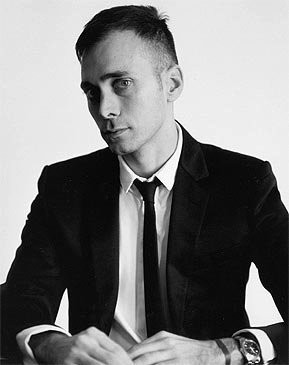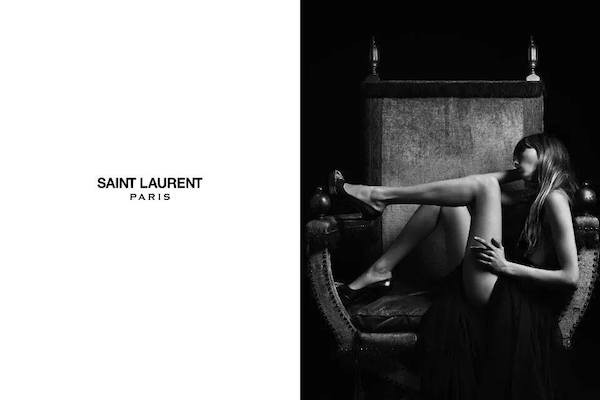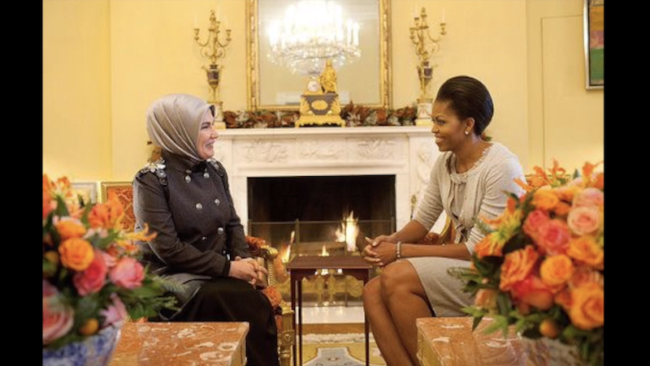By Kristi Wertz

In 1979 Paris lived an awkward and shy, tall and lanky 11-year-old boy born to an Italian mother and Tunisian father. He kept to himself and was fascinated by black and white photography and dark room printing. At the age of 16, this same boy began making his own clothes to fit his skinny figure without any regard to fashion; in 1997, Hedi Slimane traipsed through the doors of the world renowned fashion house, Yves Saint Laurent, for the first time and it changed his life forever.
YSL has an uncertain future now that Slimane, creative and image director of the fashion house for the last four years, announced his second departure from the company in 16 years April 1.
Saint Laurent announced the departure of its creative director in a joint press release with Kering Group, the owner company of the luxury brand, at the beginning of this month.
“At the end of a four-year mission, which has led to the complete repositioning of the brand, the Maison Yves Saint Laurent announces the departure of Hedi Slimane as its Creative and Image Director,” the press release read.
It is rumored that the artist’s initial contract as the company’s creative and image director ended March 31 and was not renewed because Slimane and the company could not agree on a new contract.
In the announcement, Francesca Bellettini, the president and CEO of Yves Saint Laurent, showed her appreciation for Slimane’s tenure at the company.
“I would like to thank Hedi Slimane very much for his vision in reforming such an iconic House as Yves Saint Laurent,” Bellettini said in her announcement. “The direction that has been taken over the last four years represents an incredible foundation for the brand to build on for its continuous success.”
Francois-Henri Pinault, chairman and CEO of Kering Group, followed Bellettini’s statement with one of his own, thanking the designer.
“I am very thankful for Hedi Slimane, and the whole Yves Saint Laurent team, for having set the path that the house has successfully embraced, and which will grant longevity to this legendary brand,” Pinault said in his announcement.
During Slimane’s time at Saint Laurent, sales doubled from what they were before he arrived and from 2012-2014 revenue for the company increased by more than 20 percent each year, which surpassed the overall market for luxury goods. In 2015, sales increased to €974 million from €707 million in 2014.
“Four years is too soon for Slimane to leave,” men’s fashion blogger Christian McDuffey said of the designer’s exit. “It seems he [Slimane] didn’t really live up to his potential as a creative and image director. Yes, while he did increase revenue for the brand, had I been in his position, I would have loved to see my vision come to fruition. Since revenue is still increasing, it would have been interesting to see how much farther he could go.”
Before 2012 and Slimane’s return to the fashion house, Yves Saint Laurent was considered the runt of the litter in the fashion world.
Upon arriving back to the fashion house in 2012 as Yves Saint Laurent’s creative and image director, Kering Group gave Slimane full rein of the visuals and merchandise for the company in hopes of revamping its image.
Slimane made many controversial decisions in an attempt to earn the “luxury” back in the title “luxury brand.”
During his tenure as creative director, Slimane gutted the stores of their old products and made the brand more contemporary, redecorated all of the brand’s luxury boutiques around the globe, opened a design studio in Los Angeles and dropped the “Yves” from the name of the ready-to-wear line.
People criticized Slimane’s overhaul of the company, complaining that Yves Saint Laurent gave the creative director too much leniency, since his control even extended to advertising, in which he photographed the ads himself with black and white photography — a now iconic staple to Saint Laurent.
The biggest condemnation Slimane endured was when he took “Yves” out of the name in the ready-to-wear collection, simply renaming it “Saint Laurent Paris.” The designer’s goal was to bring it back to its original moniker, “Saint Laurent” because when the designer first started out, he named the label “Saint Laurent Rive Gauche.”

However, some protested the change and many stores and online clothing websites began selling shirts with the slogan, “Ain’t Laurent without ‘Yves.'”
Sophomore Jessye Bullock, a fashion media and marketing double major, is in agreement with the critics of Slimane’s decision to nix “Yves” from the company’s ready-to-wear collection.
“When you lose the name, you lose the value. People pay for the name YSL not SL,” Bullock said.
Despite the judgments that people made about Slimane and his changes within the company, the artist was still able to increase sales revenue from €353 million in 2011, the year before his tenure, to €974 million in 2015, his final year. And numbers don’t lie.
The changes that were made all helped transform this company from the runt of the litter to the alpha dog of them all, being one of the fastest growing fashion houses in the country.
During his tenure, Slimane popularized the skinny jean, the leather jacket and an overall grunge inspired look that is now the epitome of what the brand is about these days.
So what happens now that the creator of the dark, edgy, super skinny, rocker fashion so synonymous with Saint Laurent, is leaving the fashion house? What does this mean for the future of the fashion industry as it adds yet another major shock to the fashion world following Raf Simon’s exit from Dior after his short three year tenure as creative director and Alber Elbaz’s expulsion from Lanvin?
Alex Prado, a manager at the Saint Laurent store in Dallas, thinks that the major changes going on in the industry right now are not anything to worry about.
“Many people are constantly moving around the industry. That is a part of the fashion world; it is always changing and evolving,” Prado said. “I don’t think it has any negative connotations. I just think that people are always moving around and everything in this industry is very fluid.”
Bullock takes an opposing stance to Prado’s. The student implies that the world of fashion is losing itself and thus is no longer about the art but instead based on outside influences, which can be where the foundation of fashion begins to crack.
“A lot of the artistry is in jeopardy as a more commercial aspect takes over and numbers begin to drive business. Many of the creative directors have left because of the resistance between the art and the numbers that the executives push for them to turn a profit,” Bullock said.
McDuffey’s opinion takes a stance that sits in between the two extremes.
“I’m confident to say that fashion isn’t always certain and that you can be here one minute and gone the next, whether it’s chasing a new opportunity to advance your fashion skill or chasing a bigger check,” he said.
The contrasting predictions might implicate that the future of fashion is uncertain and the next move for Simons and Slimane and their ex-fashion houses may not be so clear cut. But one thing is for certain, as of April 3, the Maison Yves Saint Laurent has appointed Anthony Vaccarello as Slimane’s successor.
Bullock believes this move was too abrupt.
“It was too soon considering all of the changes the company was already undergoing,” she said.
McDuffey hopes for the best with the new appointment while also reinforcing the pressure that comes with the job.
“I think he has his work cut out for him and that if he’s going to prove himself as director for YSL then let’s hope he has more than just a trick up his sleeve,” he said.
Vaccarello has some big shoes to fill. The new creative director is still an up-and-coming designer who is transferring from a much less critically-acclaimed fashion house of Versace’s sister company Versus Versace.
Slimane, compared to Vaccarello, was experienced and had worked at Yves Saint Laurent in the late ’90s when Yves Saint Laurent was still at the company. Slimane also made an unforgettable stamp on Saint Laurent and was willing to sacrifice his relationships in order to create his artistic dream.
Prado said that he believes Vaccarello will not take away the hard work that Slimane put into the luxury brand, and instead his designs and aesthetic will be very similar to Slimane’s.
The question is now, was four years long enough to make Slimane’s achievements during his tenure permanent?
“A good foundation for a brand to change is at least five years to make the change and at least an additional three years to see that change become a permanent part of the company,” Bullock said. “Change takes a while to take effect and four years is not long enough to effectively rebrand a company and have it stick.”
Vaccarello has yet to create a clothing line for the fashion brand.
Theories may be considered as to how the designer is going to handle the job, but the future of Saint Laurent is going to remain uncertain until after the newly appointed creative director conducts his first fashion show, designs for the company or makes his first few changes within the brand.
People might have gotten a glimpse into the goals of the Vaccarello-era differing from the Slimane-era with the clean-slated Saint Laurent Instagram that only features one picture: a black and white portrait of the new Creative Director.
Despite Vaccarello’s attempt to start anew on Instagram, Slimane will always be the designer who transformed from a terribly shy, photography-loving French boy to a man who was savvy, smart and risky enough to enter an iconic fashion house, triple the fashion house’s revenue in four years and transform it, much like himself, into something amazing.








